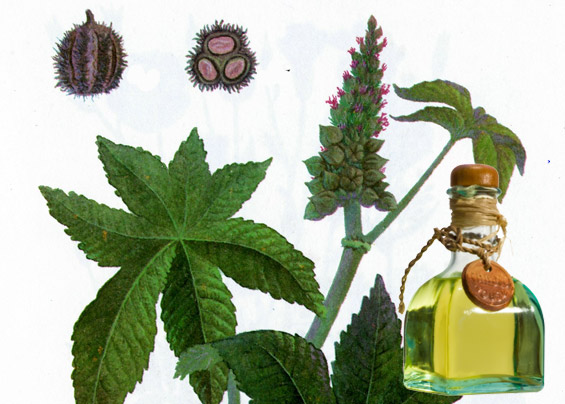8 STEPS TO REVERSING AUTOIMMUNE DISEASE
What is Autoimmune Disease?
Autoimmune disease is a case of mistaken identity. In response to some kind of trigger, the immune system starts overreacting and misfiring, producing antibodies that attack the body’s own tissues instead of foreign invaders. Organs and tissue (such as the thyroid gland) can be damaged as a result. People often suffer autoimmune “flare-ups” when an inflammatory trigger causes severe symptoms to surface for a period of time. I see this most often in my Celiac clients who accidentally eat gluten, causing them severe digestive pain for days.
Conventional treatment for autoimmune diseases generally focuses on reducing immune system activity with immunosuppressive drugs. While these medications can be effective at reducing some of the symptoms of the condition, because they suppress the entire immune system, they aren’t without many unwanted side effects: fatigue, weight gain, depression, increased infection rates and even cancer.
Risk Factors for Autoimmune Disease
There are several key factors that have to be present in order to develop autoimmune disease. Certainly there is a genetic component, but triggers must occur in order to for the disease to express itself. Often this can be physical trauma or a traumatic event that’s a major stressor on the body. But just because you have a history of autoimmune disease in your family does not mean you will develop it. You can overwrite your genetic code and prevent the disease via diet and lifestyle.
Though symptoms vary widely,here are a few signs of autoimmune disease:
- Joint pain, muscle pain or weakness or a tremor
- Weight loss, insomnia, heat intolerance or rapid heartbeat
- Recurrent rashes or hives, sun-sensitivity, a butterfly-shaped rash across your nose and cheeks.
- Difficulty concentrating or focusing
- Feeling tired or fatigued, weight gain or cold intolerance
- Hair loss or white patches on your skin or inside your mouth
- Abdominal pain, blood or mucus in your stool, diarrhea or mouth ulcers
- Dry eyes, mouth or skin
- Numbness or tingling in the hands or feet
- Multiple miscarriages
8 Steps to Reversing Autoimmune Disease
If you’ve been diagnosed with an autoimmune condition, I have good news for you. It is ABSOLUTELY possible to reverse your autoimmune disease and free yourself from symptoms and flares. I have seen it in colleagues and clients: blood tests that reveal no presence of the high antibody levels that indicates autoimmune disease is present. The disease is reversible through changing your diet and lifestyle habits.
1. Give up the grains.
Step 1 is changing your diet, and grains are the first to go. As we’ve discussed, gluten is strongly correlated with autoimmune disease, especially Hashimoto’s and Grave’s. Grains contain lectins and phytic acid that irritates the gut lining, contributing to inflammation, and the main goal in reducing autoimmune flares and reversing the disease is quelling inflammation in the gut and systemically.
2. Ditch the Dairy.
Allergies or intolerances to casein are extremely common, and these intolerances contribute to the inflammation we’re attempting to combat. Pasteurized dairy in particular causes inflammation and contributes to estrogen dominance, 2 factors that exacerbate autoimmune thyroid conditions particularly. One caveat: if you are not sensitive to casein, raw dairy may actually boost immune health, but I have everyone eliminate it for 60 days initially.
3. Determine your food intolerances.
I put all my autoimmune clients on an autoimmune paleo protocol for 60 days to see what improvements they make. This means eliminating grains, dairy, legumes, nuts/seeds, nightshades, eggs, alcohol. Once they start feeling better, we reintroduce foods one by one, slowly, to see which foods produce a reaction. You want an anti-inflammatory diet that’s right for you. It will look different for each person depending upon to which foods you react.
Before you panic about all the foods you have to give up: Don’t worry, you won’t have to be this strict forever. The autoimmune protocol isn’t designed for longterm compliance. It’s an allergy elimination diet to see which foods are causing you inflammation, so you know which foods to eliminate. Even if you react to multiple foods and have to steer clear of those for several months, you can try reintroducing them again a few months later. Healing leaky gut means many food intolerances heal.
4. Normalize your vitamin D levels.
Vitamin D is crucial for a healthy immune system. There is increasing epidemiologic evidence linking vitamin D deficiency and autoimmune diseases including multiple sclerosis, rheumatoid arthritis, type 1 diabetes, inflammatory bowel disease and systemic lupus. I recommend starting vitamin D supplementationright away.
5. Fix your gut.
Though we aren’t sure about the origins of autoimmune disease, we do know it involves the digestive tract, because 60-80% of your immune system is in the gut. The theory is that multiple food allergies, poor gut flora, and leaky gut constantly keep the immune system firing and working until it finally begins misfiring. How to fix your gut? Fix leaky gut, eliminate allergenic foods and foods high in anti-nutrients (on the autoimmune protocol), and stool testing to determine if pathogenic bacterial infections,parasites, and/orcandida are present. Rebalance gut flora.
6. Relieve stress to prevent flares.
Stress is often the straw that breaks the camel’s back.There is a clear connection between stress wearing down the gut, sending your hormones haywire, and increasing inflammation. I recommend meditation, detox baths, and read these tips to support yourself through the stress that is inevitable in every day life. Exercise also helps.
7. Find hidden infections.
We know that autoimmune disease surfaces in those with VIRUSES such as Epstein-Barr, herpes, or those who’ve had mono. Ask your doctor to test for underlying infections that can be addressed. These viruses continually affect your immune system.
such as Epstein-Barr, herpes, or those who’ve had mono. Ask your doctor to test for underlying infections that can be addressed. These viruses continually affect your immune system.
8. Reduce inflammation.
Aside from curating your autoimmune anti-inflammatory diet, reduce inflammation by including an omega-3 fatty acid supplement, turmeric tea, and managing cortisol levels. Also include glutathione, one of the body’s most potent antioxidants and detoxifiers.








